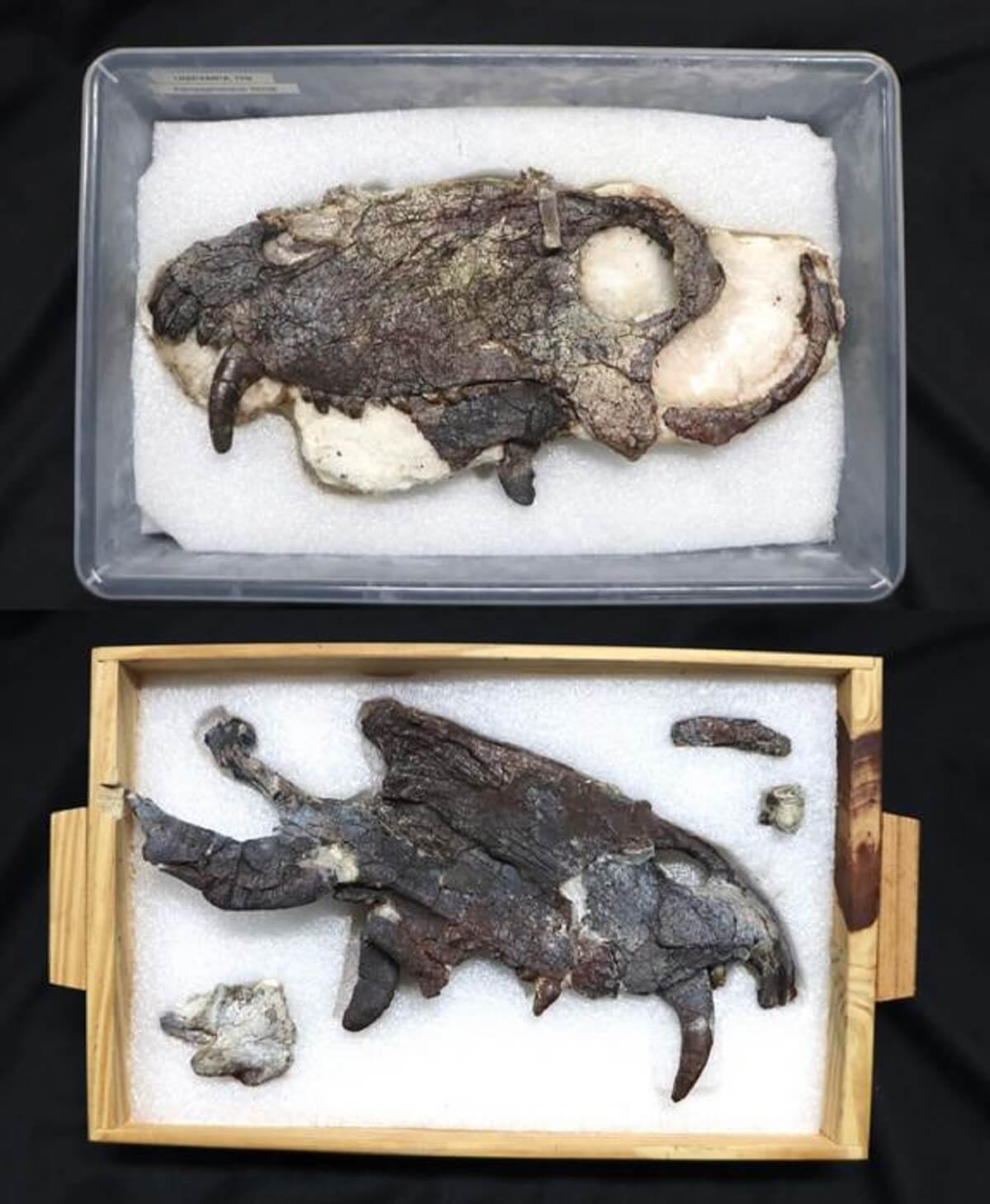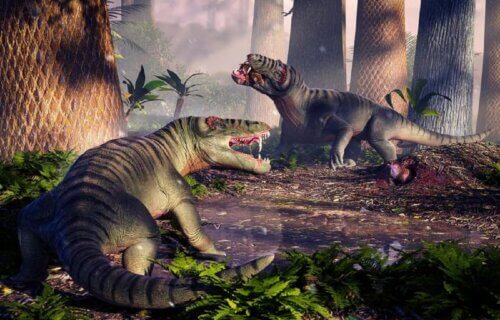RIO GRANDE DO SUL, Brazil — A 265-million-year-old skull belonging to a terrifying and “bloodthirsty” creature has been discovered in the rural area of São Gabriel, Brazil. According to scientists, this ancient predator, named Pampaphoneus biccai, was the largest meat-eating animal of its time.
An international team of researchers found the “astoundingly well-preserved” skull, along with some ribs and arm bones, during a month-long excavation. Study delays due to the pandemic meant it took an additional three years for the fossil to be cleaned and thoroughly analyzed.
Pampaphoneus lived just before Earth’s largest mass extinction event, which wiped out 86 percent of all animal species worldwide. It belonged to a group of animals known as dinocephalians — large, land-dwelling creatures that included both meat-eaters and plant-eaters. The term “dinocephalian” translates to “terrible head” in Greek, a nod to the group’s notably thick skull bones.
The researchers explain that while well-known in South Africa and Russia, the animals are rare in other parts of the world. Pampaphoneus biccai is the only known species in Brazil.

The skull provides crucial insights into the creature’s morphology, or physical structure, due to the excellent preservation of its bones. It is the second Pampaphoneus skull ever found in South America and is larger than the first.
“Finding a new Pampaphoneus skull after so long was extremely important for increasing our knowledge about the animal, which was previously difficult to differentiate from its Russian relatives,” says Mateus Costa Santos, the study’s lead author from the Federal University of Pampa (UNIPAMPA), in a media release.
Researchers estimate that the largest individuals of this species could have reached nearly 10 feet in length and weighed around 882 pounds. Potential prey for this fearsome creature have also been discovered in the same area, including the small dicynodont Rastodon and the giant amphibian Konzhukovia.
“It was the largest terrestrial predator we know of from the Permian in South America. The animal had large, sharp canine teeth adapted for capturing prey,” says senior author Professor Felipe Pinheiro, also of UNIPAMPA. “Its dentition and cranial architecture suggest that its bite was strong enough to chew bones, much like modern-day hyenas.”
The study also reveals Pampaphoneus fed on small to medium-sized animals.
“This animal was a gnarly-looking beast, and it must have evoked sheer dread in anything that crossed its path. Its discovery is key to providing a glimpse into the community structure of terrestrial ecosystems just prior to the biggest mass extinction of all time,” says co-author Professor Stephanie Pierce of Harvard University.
The research is published in the Zoological Journal of the Linnean Society.
You might also be interested in:
- Dinosaur discovered on the Isle of Wight may have been the largest land predator in Europe
- Humans were already the dominant predatory species on Earth — 2 million years ago
- Predator vs. Predator: New study finds alligators eat sharks
South West News Service writer Stephen Beech contributed to this report.

